Sphingidae: Lintneria genus
In his book The Hawk Moths of North America, James P. Tuttle, designated the genus Lintneria as appropriate
for several US species, previously listed as members of the Sphinx genus:
Lintneria: eremitus, eremitoides, separatus, istar and smithi.
Based on some consistent characters of adult moths, he predicted that almost all of the previously
classified Sphinx species in Mexico and from Mexico south throughout Central and South America would be more appropriately assigned to the genus Lintneria.
Only Sphinx adumbrata from Mexico remains as Sphinx adumbrata.
I am requesting assistance in exploring Tuttle's prediction. I seek larval images from Central and South America that are of the same general pattern exhibited by
these Lintneria species.
In the United States, Lintneria eremitus ranges from Maine south to North Carolina into northern Georgia, west to Manitoba, South Dakota and Missouri.
It has been seen in southeastern North Dakota.
Lintneria eremitoides is more limited in its range, flying over sandy prairies in the Great Plains from Kansas south through central Oklahoma to Texas, and
possibly west to Colorado and New Mexico, and as a rare stray to western Missouri.
Lintneria istar flies in mountains and pine-oak woodlands from southern Arizona east to southwestern Texas.
Lintneria separatus flies in Colorado south through New Mexico and Arizona and into southwestern Texas.
Lintneria smithi flies in southeastern New Mexico and southeastern Arizona.
I am also interested in larval images from the United States.
Note that in the earlier instars in the first set of images
there is a fleshy thoracic dorsal "horn", and the anal horn is thick, long and follows the line of the last oblique line on the caterpillar's body.
Earlier Instars
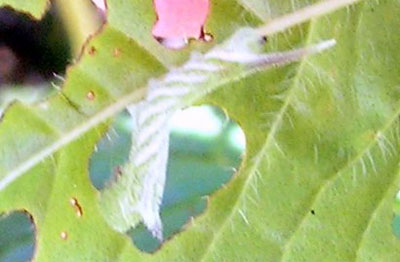
Lintneria eremitus third instar, August, Taylor County, Wisconsin, courtesy
of Joan F. Rickert.
*****
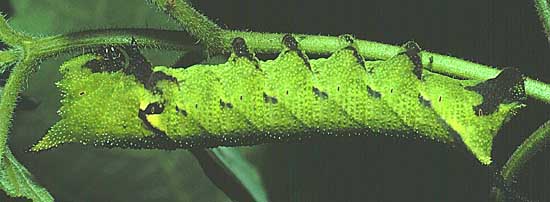
Lintneria merops third-fourth instar, Costa Rica, courtesy of Dan Janzen.
*****
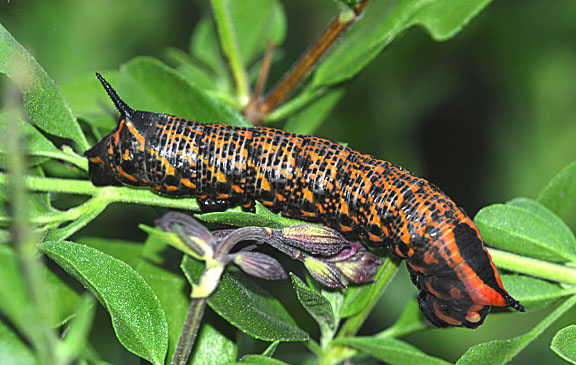
Lintneria separatus, fourth instar molting, Cochise County,
Arizona,
September 29, 2007, courtesy of
Robert A. Behrstock, id by James A. Tuttle.
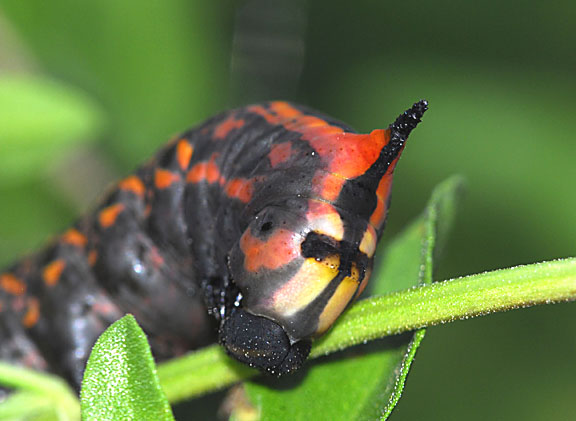
Lintneria separatus, fourth instar molting (head), Cochise County,
Arizona,
September 29, 2007, courtesy of
Robert A. Behrstock, id by James A. Tuttle.
*****
Jim Tuttle has provided the image of the following fourth instar Lintneria pseudostigmatica larva. He indicates colours may be off as these have been preserved in alcohol.
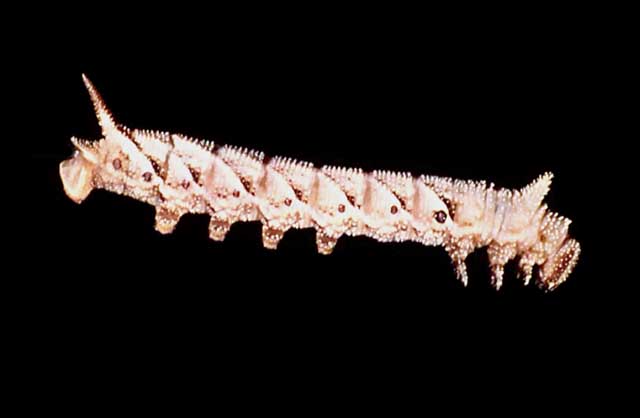
Lintneria pseudostigmatica fourth instar, courtesy of James P. Tuttle.
Final Instar
In the final instar the thoracic "horn" is replaced by a greatly reduced thoracic dorsal "hump" with a large black patch on the thoracic segments.
The anal horn is also reduced and tends to droop.
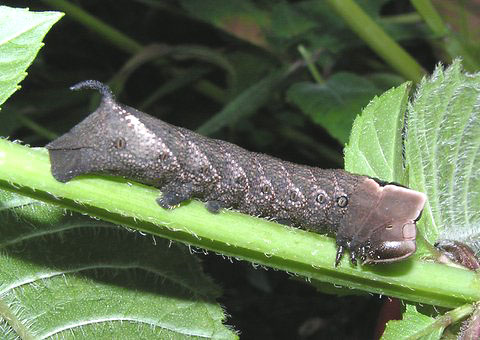
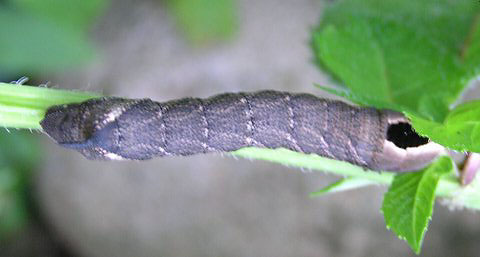
Lintneria eremitus final instar, August 22, Taylor County, Wisconsin, courtesy
of Joan F. Rickert.
*****
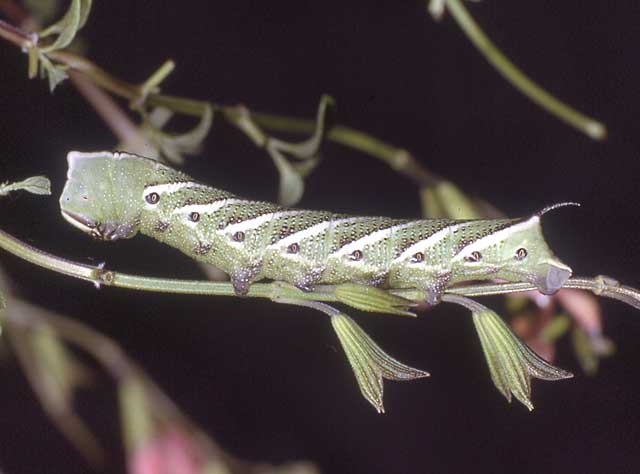
Lintneria eremitoides, Hwy 83, near Concan, Uvalde County, Texas,
courtesy of James Tuttle.
*****
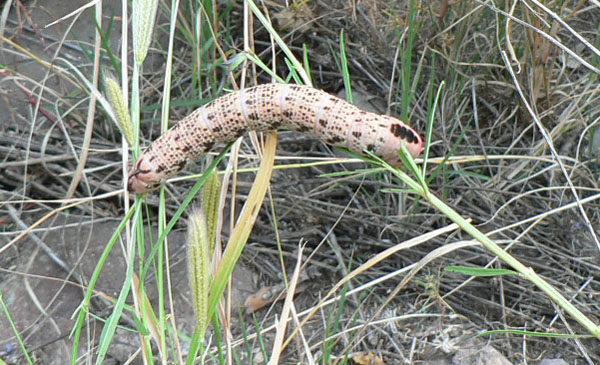
Lintneria (Sphinx) istar or separatus, Ft. Davis,
Texas,
October 1, 2005,
courtesy of Mary Brown via Katherine McMahon.
*****
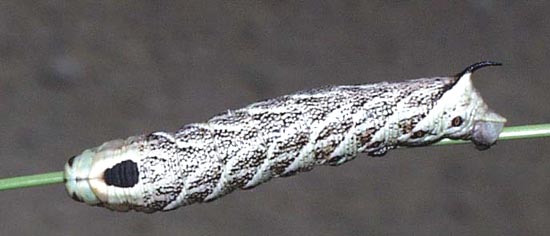
Lintneria smithi fifth instar, courtesy of Bruce Walsh
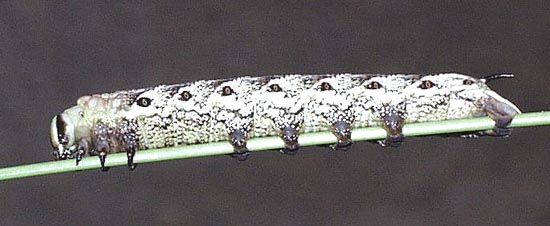
Lintneria smithi fifth instar, courtesy of Bruce Walsh
*****
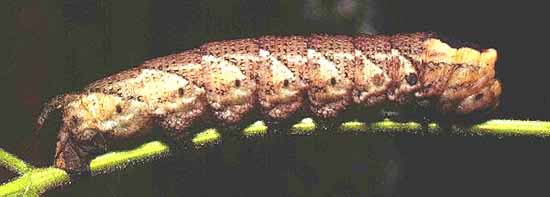
Lintneria merops fifth instar, Costa Rica, courtesy of Dan Janzen.

Lintneria merops fifth instar, Costa Rica, courtesy of Dan Janzen.
*****
Jim Tuttle has provided images of the following fifth instar Lintneria pseudostigmatica larvae. He indicates colours may be off as these have been preserved
in alcohol.
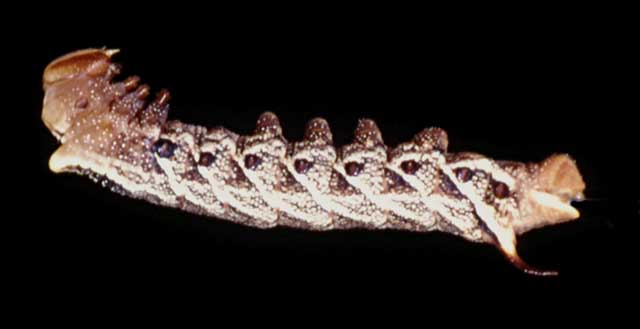
Lintneria pseudostigmatica fifth instar, courtesy of James P. Tuttle.
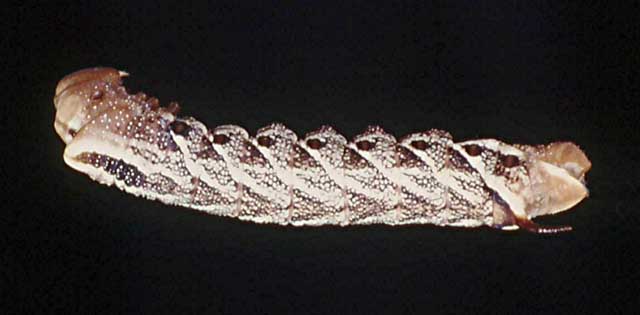
Lintneria pseudostigmatica fifth instar, courtesy of James P. Tuttle.
*****
It is anticipated that the Lintneria larvae will most often be encountered on Lamiaceae: Salvia (Sage), Mentha (Mints), Monarda (Beebalm)
and Hyptis (Bushmints);
Verbenaceae: Verbena and Lantana camara (shrub verbenas or lantanas).
Although they may be encountered feeding during daylight hours, one is even more likely to discover them feeding in the evening or after dark.
Two of the greatest clues for discovering larvae are stripped foliage and droppings beneath the plant. You might be quite surprised at what will turn up
in the evening or after dark in
a flashlight assisted search.
It is believed that all Lintneria larvae will exhibit "a fleshy thoracic dorsal "horn" in the first 4 instars
(unique in the Sphingidae of the world to my knowledge) which is replaced by a thoracic dorsal "hump" with a large black patch in the 5th instar." J.A. Tuttle.
Lamiaceae: Salvia and Hyptis sidifolia (= H. umbrosia) are the anticipated hosts in South America.
As most of these larvae are undescribed as yet, it wil be very helpful if you can rear the larva through to adulthood and also send an image of the adult moth.
If/when you are able
to send images of the larvae, I will help with notes on care of larvae to get pupation and subsequent adults. You will be credited for any
discoveries that get published based on your submissions.
If you are able to find any larvae matching the pattern/characters illustrated above, please send images (lateral and dorsal) with data (date, time, specific location, host plant, elevation,
etc.) to Bill Oehlke. Your assistance in this matter will be greatly appreciated.
Use your browser "Back" button to return to the previous page.














